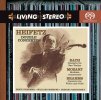I'm with you. With 3 speakers covering the front, the mixer (automatic or human) has more flexibility on how to put stuff in front of the listener. Not only do they have a position control, they have a width control.
Many multichannel music mixes will quite deliberately manipulate the width by choosing which elements to send to C, which to send to L+C+R, and which to send to L+R. Some vocalist overdubs might be centre-only, for example, clearly distinguishing them tonally from the main vocals in L+C+R.
Even in the Atmos world, Atmos objects have width. If a small object is positioned between real speakers, it's forced to phantom, and hence be wider than ideal.
The centre front position is really important, hence why it shouldn't only be reproducible by a phantom. We want to have a width control there, not force things always wide.
I'm also on PLIIx, and a great fan, and sceptical of Dolby Surround. It does have a "centre spread" toggle, which I gather is equivalent to flipping between "0" and "3 or 4" in Dolby Pro Logic Music's "centre width". But that's the only control.
PLII wasn't brilliant at doing less than 5 channels itself, mind. I gather LFE is routinely thrown away with anything less than 5 speakers in a lot of systems, so 3.1 with LFE isn't possible.

